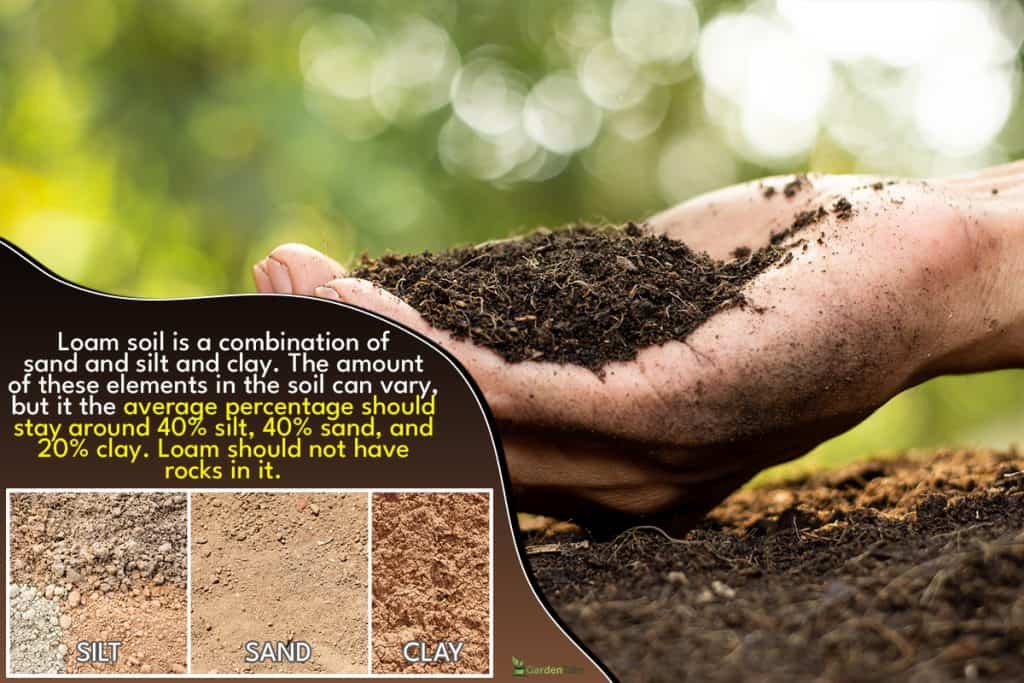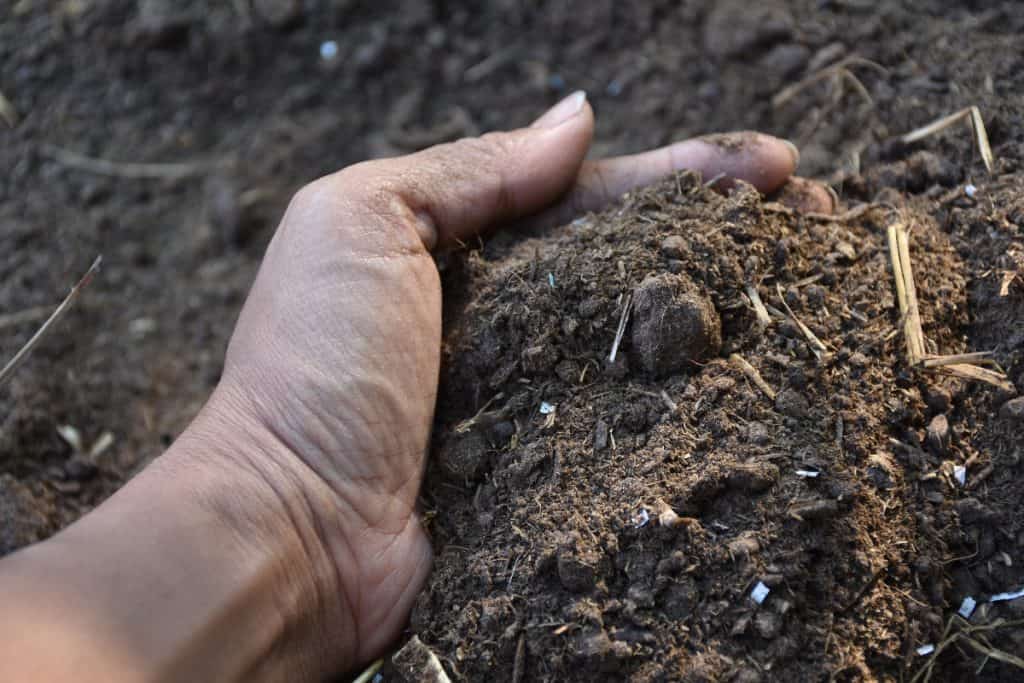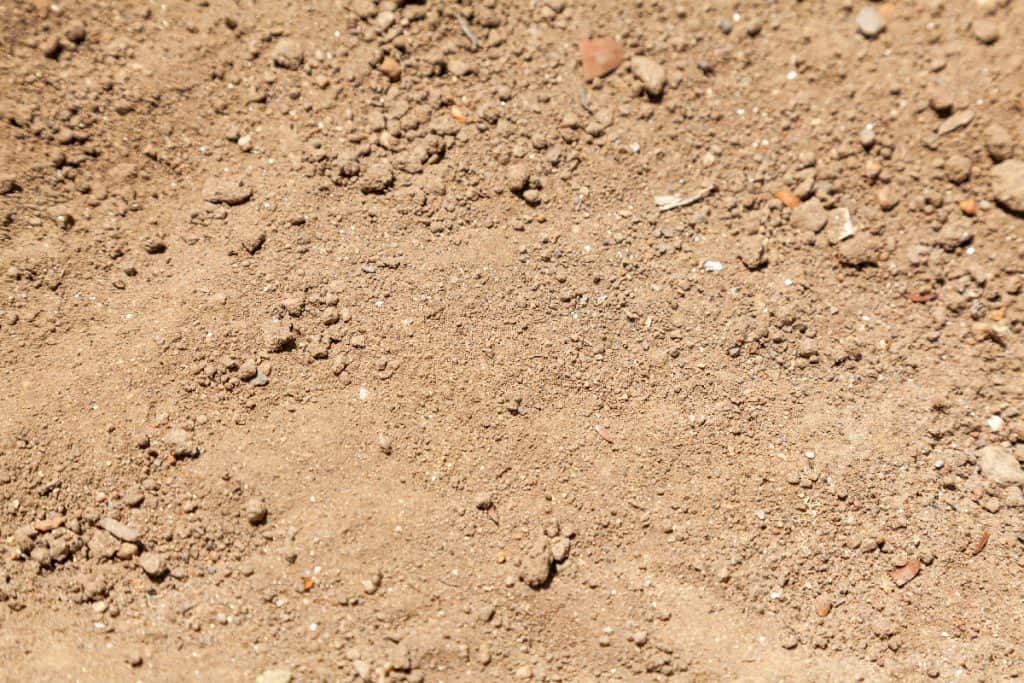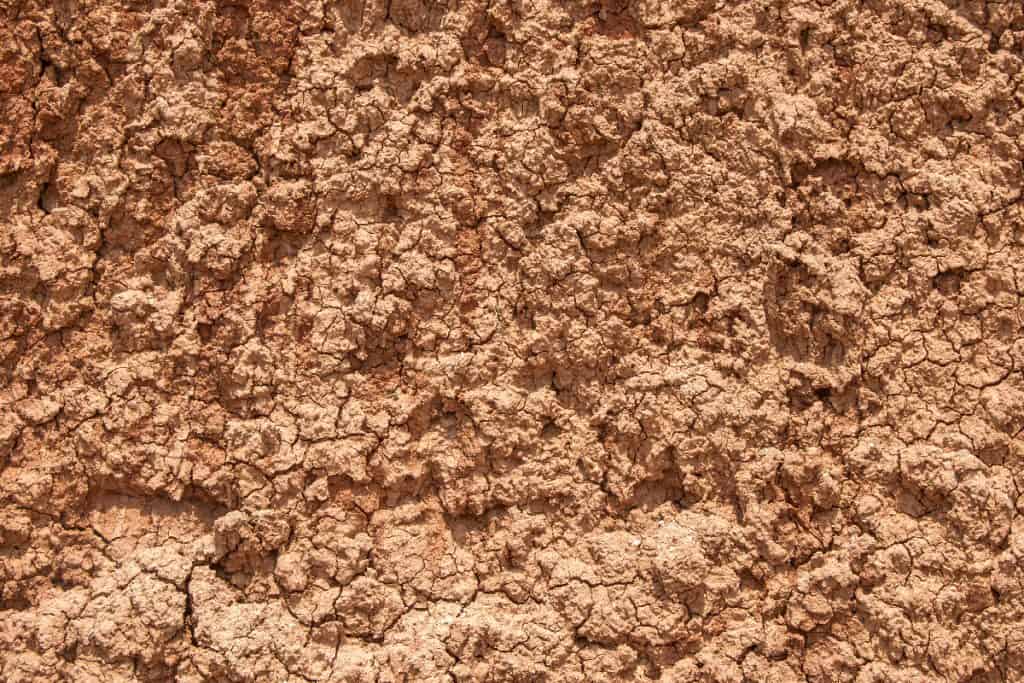A lot of garden plants prefer loam soil because it keeps enough moisture without retaining too much water. You might be wondering what the proper texture of loam soil is or whether it should have rocks, so we have done the research to provide you with all the necessary information you will need.
Loam should not have rocks in it. Loam soil consists of clay, sand, and silt. The biggest granule out of the three would be sand granules, which have an average size of 0.0025 inches and are significantly smaller than an average rock.
Loam is a common soil used for garden plants due to its well-draining characteristics without being susceptible to water retention. Loam soil is a good combination of sand silt and clay that carries a lot of nutrients without having the tendency to rot plant roots. Continue reading as we discuss more of the important details of loam soil.
Does Loam Have Rocks?

Loam soil is one of the most common soils used in gardening. Not all plants require loam soil to grow because each plant species has a different list of needs in order to grow well. Even so, a large number of garden plants need loam soil due to its components.
Loam soil is a combination of sand and silt and clay. The amount of these elements in the soil can vary, but it the average percentage should stay around 40% silt, 40% sand, and 20% clay. If the measurements of silt, sand, and clay are kept at around 40-40-20 respectively, then it is considered loam soil.
There are variations of loam soil, but the components are not different. The only way a loam soil variation can be made is if one component's measurements are increased or decreased.
For example, if the amount of sand is increased in loam soil to more than 40 percent, then it will be considered a variation of loam soil called sandy loam.
Just as we discussed, loam soil consists of silt, sand, and clay. These three components are a result of other organic materials combined with weathered and eroded rocks, but there should not be whole rocks in the soil. The largest soil particle in loam soil should be the sand particles in the mixture.
A particle larger than 0.5 inches is considered a pebble, and rock sediment bigger than 0.0025 is considered gravel. Loam should not have pebbles, not even gravel. Soil with large rock particles can be classified as either gravel soil or rocky soil, but not loam soil.
What Is In Loam Soil?
Besides silt, sand, and clay, loam soil has humus. Humus is the black or brown material found on the top layer of the ground. This material is composed of organic material that has decayed or is in the middle of the process of decomposition.

Humus is a very important component of loam soil. Humus is made out of natural products like rotting wood, fallen leaves, and straw. When these natural materials decompose, they add nutrition to the soil.
These materials also encourage the growth of living microorganisms in the soil, which makes it healthier for growing plants than other types of soil. Besides attracting good soil bacteria, the presence of humus in loam soil also transforms the soil into a suitable environment for earthworms to live in.
The amount of humus in loam soil is a very important factor that separates loam soil from the average ground soil. Since this organic material supports and encourages the growth of microorganisms in the soil, it results in a higher amount of nitrogen which is an essential factor in growing plants.
Loam soil is basically all of the most common types of soil combined. By combining sand, silt, and clay, the soil will transform into a better composition that contains all the benefits of each material. This means that loam soil will have the nutrients of clay and the well-draining capabilities of sand and silt.
Which Variation of Loam Soil Is The Best For Growing Plants?
Generally, loam soil is great for many garden plants. This is because the combination of sand, silt, and clay creates a soil that retains just enough moisture to not dehydrate the plants while draining excess water that would otherwise saturate the roots in water. Too much water will drown and rot plant roots.
The perfect variation of loam soil depends on what plant you have. Some plants require a lot more moisture retention that additional clay in the soil might compensate for. Other plants might require more drainage than a little more than 40 percent of sand in the loam soil might fix.
The type of soil you should grow your plants also depends on your location. By being aware of your garden's humidity levels and the amount of direct sunlight it receives on a daily basis, you will know what type of soil will benefit your plants well. Below is a list of loam soil variations and the plants that can grow well in them.
Sandy Loam Soil

Common vegetables can grow well in sandy loam soil, especially when organic material is integrated into sandy loam soil. This is due to the well-draining capabilities of the soil that the sand in the composition provides. Flowering bulbs like daffodils, lilies, and hyacinths also prefer sandy loam soil.
Grass is also commonly grown in sandy loam soil. Common turfgrasses that have deep roots like zoysia and Bermuda grasses grow well in sandy loam soil.
Clay Loam Soil

Since clay is dense and has a tendency to retain too much water, common plants will have a hard time establishing themselves in the ground. This will result in a plant that is incapable of absorbing its much-needed nutrients from the soil even if clay is rich in that.
Vegetables with short roots like lettuce, chard, and beans grow well in clay loam soil. Cabbage also needs more clay in the soil because its roots need denser soil.
Vegetables that have to be placed in planting holes can basically grow anywhere as long as there is organic compost included in the soil's composition. This includes clay loam soil.
Silty Loam Soil

Plants that prefer looser soil compared to clay loam or loam soil will grow well in silty loam soil. Aquatic plants that commonly grow in wetlands can grow well in silty loam soil. In addition, shrubs, climbers and other perennial plants also grow well in silty loam.
Silty loam soil also has moisture-retaining capabilities, but not as much as clay loam soil does. Nevertheless, trees like willow, birch, and cypress that need more moisture would do well in silty loam soil.
Can I Make My Own Loam Soil At Home?
If you do not have loam soil readily available at home, you can simply purchase the soil at a garden shop. You can create your own loam soil at home, but the process takes years for any type of soil to transform into loam soil.
Simply mixing silt, clay, and sand together might create a more cement-like mixture instead of the friable texture that loam soil typically has. Friable mixture refers to the loose and crumbly texture that loam soil has.
This texture is the result of the humus or organic matter added to the loam soil. The humus takes a very long time to break down the components of the soil, which will then result in a friable consistency.
Again, simply mixing silt, sand, and clay will not result in loam soil. The living organisms from the humus inside the soil will work to break down particles and nutrients in the soil which will then result in loam soil. This process will take years.
You can create your own loam soil at home. But if you are planning to use the loam soil any time soon, purchasing it would be the best option for you.
How Do I Make My Own Loam Soil At Home?
Add a 2-inch layer of organic material over your soil every year. Incorporate it around the soil well, mixing it into the surface. If your soil is particularly condensed like clay soil, add more than the recommended amount.
Any type of organic material can be added to the soil to eventually create loam soil. Straw, leaves, compost, and even animal manure can be incorporated into the soil. However, it is important to be mindful of the materials you will add to the soil.
To Wrap Up

Loam soil is a common gardening soil because of its moisture retention and well-draining characteristics. This type of soil has many variations.
In this article, we discussed if rocks should be included in loam soil, as well as the different types of loam soil that will suit your garden best. We also discussed the process of creating your own loam soil at home. Make sure to create the best variation of loam soil that fits your garden best.
Made it to the end? Check out some of the other related posts!
